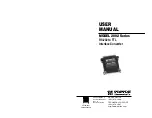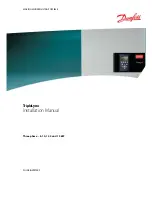
TAMC900 User Manual Issue 2.0.1
Page 20 of 71
Besides this steering information the descriptor stores the information about the pointer (address) to the
DMA memory region inside the host memory and the information about the length of this memory region.
Be aware that the length is defined in samples. Hence the number of required bytes is twice as
large as the defined length.
4.5 Sample Rate Logic
The sample rate logic allows defining two different clocks that can be used as sample rate for the different
ADC channel groups. There are two Digital Clock Managers (DCMs) that generate a clock based on a
multiply-divide ratio. The internal control logic employs clock multiplexers for switching the clocks to a certain
group. The multiplexers are glitch-free so that switching can be performed at every time.
Switching during runtime (processing) is not recommend.
In accordance with that, both groups can be set into a common clock mode (sourced from DCM0 or DCM1)
or an independent clock mode.
4.6 Module Behavior
4.6.1 Power-Up/Reset
The module has reset-conditions after it has been activated. For this the PCI Express Endpoint’s dedicated
reset signal is used. This means
•
all registers have their reset value
•
DCMs have reset settings
•
trigger signals are reset
•
the QDR memories invalidate their data
•
all DMA Engines lose their information
•
DMA processing select the base Descriptors as defined through the register map
•
interrupts are de-asserted
•
CPLD has been reset
4.6.2 Pre-Initialization (Setup) Check
Before any operation on the TAMC900 can be performed it has to be checked that
•
the GSTAT bit inside the Module Status and DCM 0/1 Status register indicates that the module is
operational,
•
all (unused) channels are disabled.
















































